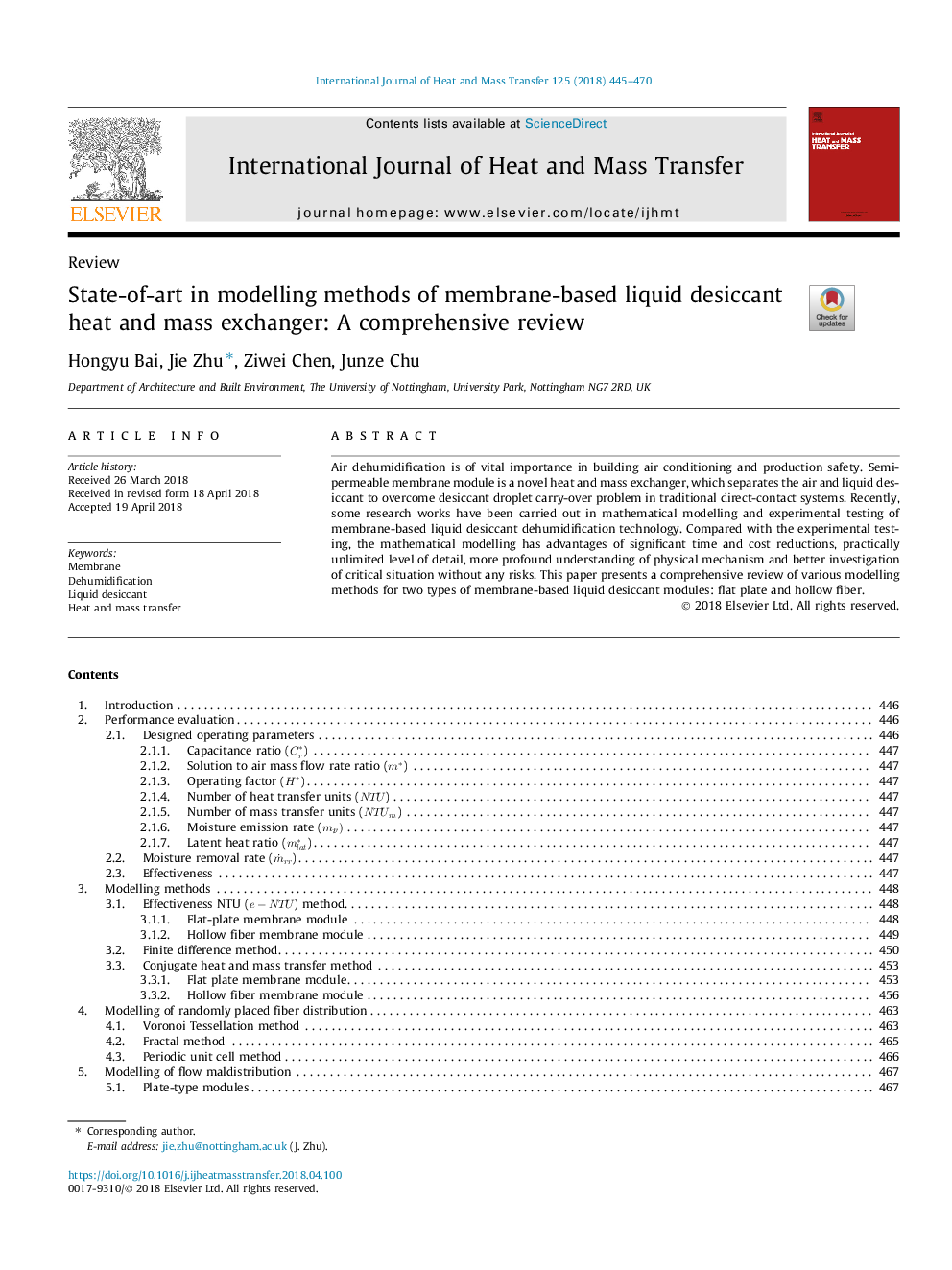| Article ID | Journal | Published Year | Pages | File Type |
|---|---|---|---|---|
| 7053992 | International Journal of Heat and Mass Transfer | 2018 | 26 Pages |
Abstract
Air dehumidification is of vital importance in building air conditioning and production safety. Semi-permeable membrane module is a novel heat and mass exchanger, which separates the air and liquid desiccant to overcome desiccant droplet carry-over problem in traditional direct-contact systems. Recently, some research works have been carried out in mathematical modelling and experimental testing of membrane-based liquid desiccant dehumidification technology. Compared with the experimental testing, the mathematical modelling has advantages of significant time and cost reductions, practically unlimited level of detail, more profound understanding of physical mechanism and better investigation of critical situation without any risks. This paper presents a comprehensive review of various modelling methods for two types of membrane-based liquid desiccant modules: flat plate and hollow fiber.
Related Topics
Physical Sciences and Engineering
Chemical Engineering
Fluid Flow and Transfer Processes
Authors
Hongyu Bai, Jie Zhu, Ziwei Chen, Junze Chu,
